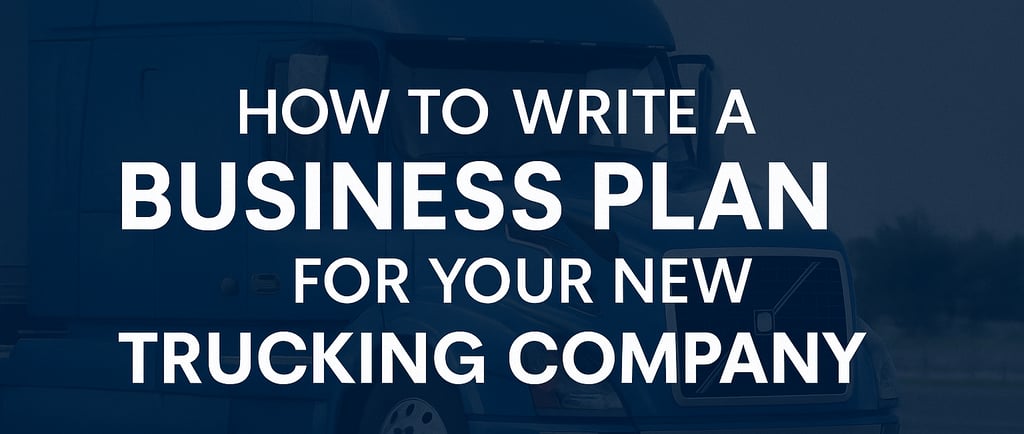How to Write a Business Plan for Your New Trucking Company
📊 Thinking about starting a trucking company? Don’t hit the road without a plan. This article shows you how to write a trucking business plan step-by-step — including sections on costs, services, and financial projections.
CDL2CEO
8/27/20251 min read


Starting a trucking company is exciting, but without a solid business plan, even the best idea can fail. A clear plan not only keeps you organized but also helps secure financing, attract partners, and set measurable goals.
Here’s how to build a trucking business plan that works in 2025.
Why You Need a Business Plan
Keeps your startup process structured.
Helps banks, investors, and factoring companies trust your vision.
Guides you through expenses, compliance, and revenue targets.
Key Sections of a Trucking Business Plan
Executive Summary
Mission statement: Why your company exists.
Vision: Where you see the business in 3–5 years.
Quick snapshot of financial goals.
Company Overview
Business structure (LLC, corporation).
Founders and management team.
Services offered (dry van, reefer, drayage, regional, OTR).
Market Analysis
Target customers: brokers, shippers, niche freight (food, building materials, etc.).
Competitor analysis: who you’re up against in your region.
Market trends: demand for regional freight, e-commerce growth, driver shortages.
Services & Operations
Equipment owned/leased.
Operating area (regional, local, OTR).
Compliance plan: DOT, FMCSA, safety programs.
Marketing & Sales Plan
Website, email, and SEO strategy.
Networking with brokers and direct shippers.
Differentiators: reliability, niche specialization, 24/7 availability.
Financial Projections
Startup costs (authority, insurance, truck/trailer, working capital).
Revenue goals for year 1–3.
Expense estimates (fuel, maintenance, insurance, compliance).
Break-even point analysis.
Tools to Make Planning Easier
Use templates (like the CDL2CEO Business Plan Template) to save time.
Lean on accounting software like QuickBooks or trucking-specific tools.
Revisit your plan quarterly to stay on track.
Final Thoughts
A strong business plan is the roadmap to long-term success in trucking. Whether you’re aiming to run one truck or grow a small fleet, writing your plan upfront will save you time, money, and stress.
👉 Want a plug-and-play editable plan? Get the Trucking Authority Toolkit by CDL2CEO — complete with a ready-made business plan template you can fill in today.